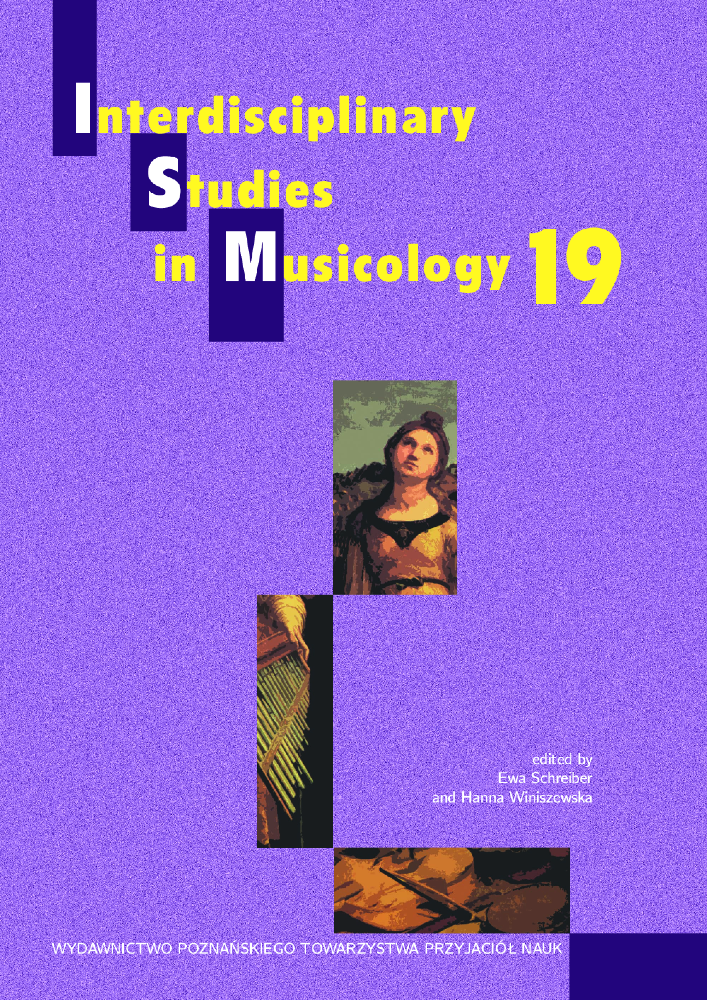Abstrakt
On the basis of works devoted to the topic of sound studies and video games, the author presents ways of processing and using sounds in order to create virtual phonic spaces. He examines the means by which contemporary game developers influence immersivity, i.e., the process of immersing the gamer in virtual environments, as well as indicating the mutual influences of audial and visual spheres. Analysig the video game Grand Theft Auto IV from the perspective of the sound which accompanies the action, he compares in this respect three areas of the game’s Liberty City with their equivalents in New York on which the virtual city is modelled. The similarities and differences between the digital and virtual spaces are identified, and the reasons for them explained. This makes it possible to show how the use of the tools (explained earlier) employed by the developers of the game enable them to create a credible sounding virtual metropolis.
Bibliografia
Collins, K. (2008). Game Sound. An Introduction to the History, Theory, and Practice of Video Game Music and Sound Design. Cambridge, London: MIT Press.
Ekman, I. (2008). Psychologically Motivated Techniques for Emotional Sound in Computer Games, paper given at the conference ‘Proceedings – Audio Mostly’ in 2008, p. 1, https://www.researchgate.net/publication/233406205_Psychologically_motivated_techniques_for_emotional_sound_in_computer_games (accessed: 03.04.2019).
Gradowski, M. (2004). Murray R. Schafer: pan od przyrody? [Murray R. Schafer: a biology teacher?]. Glissando, 2, 27–35.
Grimshaw, M. (2012). Sound and Player Immersion in Digital Games. In T. Pinch, K. Bijsterveld (Eds.). The Oxford Handbook of Sound Studies (pp. 347–366). Oxford: Oxford University Press.
Hanisch, M. (2009). Zum Sound-Design im Computerspiel Grand Theft Auto IV. Theoretische Überlegungen, Beobachtungen und eine Pilotstudie zur Wirkung mittels qualitativer Inhaltsanalyse, MA thesis, supervisor Prof. Dr. M. Weber, Vienna.
JiQuihao, A. R. A. (2015). Examining Suspension of Disbelief, Perceived Realism, and Involvement in the Enjoyment of Documentary-Style Fictional Films. Projections: The Journal for Movies and Mind, 10(2), 125–142.
Kapelański M. (1999). Koncepcja “pejzażu dźwiękowego” (soundscape) w pismach R. Murray’a Schafera [The concept of soundscape in the writings of R.Murray Schafer], MA thesis, supervisor Prof. M. Gołąb. Warszawa: Uniwersytet Warszawski.
Losiak R. (2017). Wokół idei ekologii akustycznej: Koncepcje i praktyki [Around the idea of acoustic ecology: Concepts and practice]. Studia Etnologiczne i Antropologiczne, 17, 115–126.
Losiak R., Tańczuk R. (2016). Odmiany globalności i lokalności audiosfery Wrocławia w recepcji jej mieszkańców [Varieties of globality and locality of Wrocław’s audiosphere in the reception of its residents]. Kultura – Historia – Globalizacja, 19, 57–70.
Losiak, R. (2008). Muzyka w przestrzeni publicznej miasta z badań nad pejzażem dźwiękowym Wrocławia [Music in the public space of a city as seen in the research of the soundscape of Wrocław]. Prace Komisji Krajobrazu Kulturowego, 11, 253–264.
Losiak, R. (2014). Wrocław słuchany. Audiosfera miasta w perspektywie badań terenowych [Listening to Wrocław. The audiosphere of a city from the perspective of field research]. In R. Losiak, R. Tańczuk (Eds.). Audiosfera Wrocławia (pp. 23–34). Wrocław: Wydawnictwo Uniwersytetu Wrocławskiego.
MacGregor, A. (2014). The Sound of Grand Theft Auto V, paper given at the Game Developers Conference in San Francisco in 2014. http://twvideo01.ubmus.net/o1/vault/GDC2014/Presentations/MacGregor_Alastair_The_Sound_of.pdf (access: 16.11.2018),
Nitzsche M. (2008). Video Game Spaces. Image, Play, and Structure in 3D Game Worlds. Cambridge, London: MIT Press.
Peerdeman, P. (2010). Sound and Music in Games, Vrije Universiteit Amsterdam 2010, [on-line] https://peterpeerdeman.nl/vu/ls/peerdeman_sound_and_music_in_games.pdf (access: 03.04.2019).
Pitrus, A. (2012). Olbrzym wychodzi z cienia: gry wideo jako awangarda współczesnej kultury audiowizualnej [The giant comes out of the shadows: video games as the avant-garde of contemporary music culture]. In Olbrzym w cieniu. Gry wideo w kulturze audiowizualnej (pp. VII–IX). Kraków: Wydawnictwo Uniwersytetu Jagiellońskiego.
Sterne, J. (2012). Sonic Imaginations. In J. Sterne (Ed.). The Sound Studies Reader (pp. 1–17). New York: Routledge.
Stinson, J. (n.d.). Real-time Sound Effects: The Foley Way, https://www.videomaker.com/article/7220-real-time-sound-effects-the-foley-way (access: 03.04.2019).

